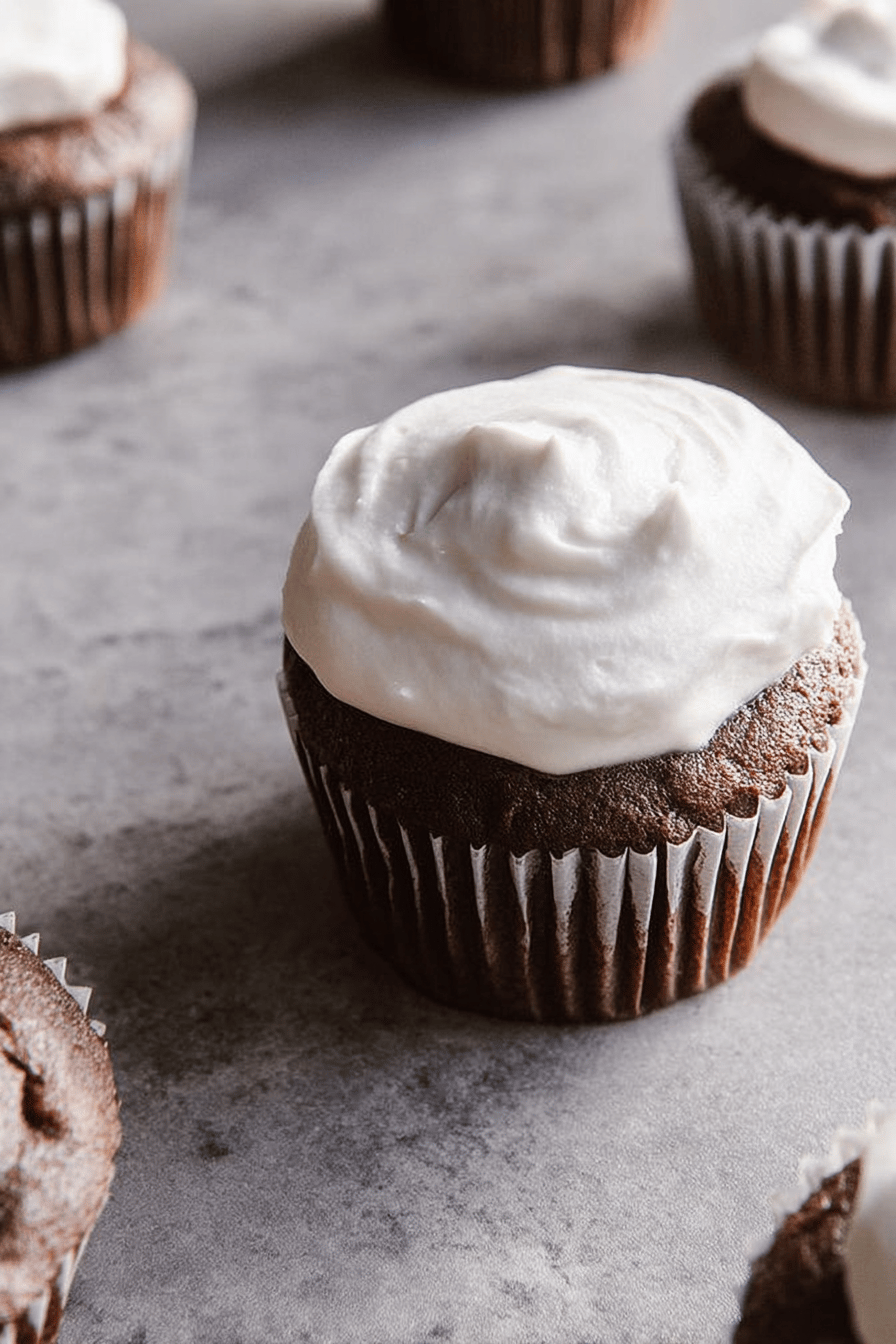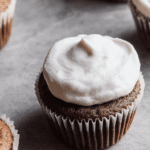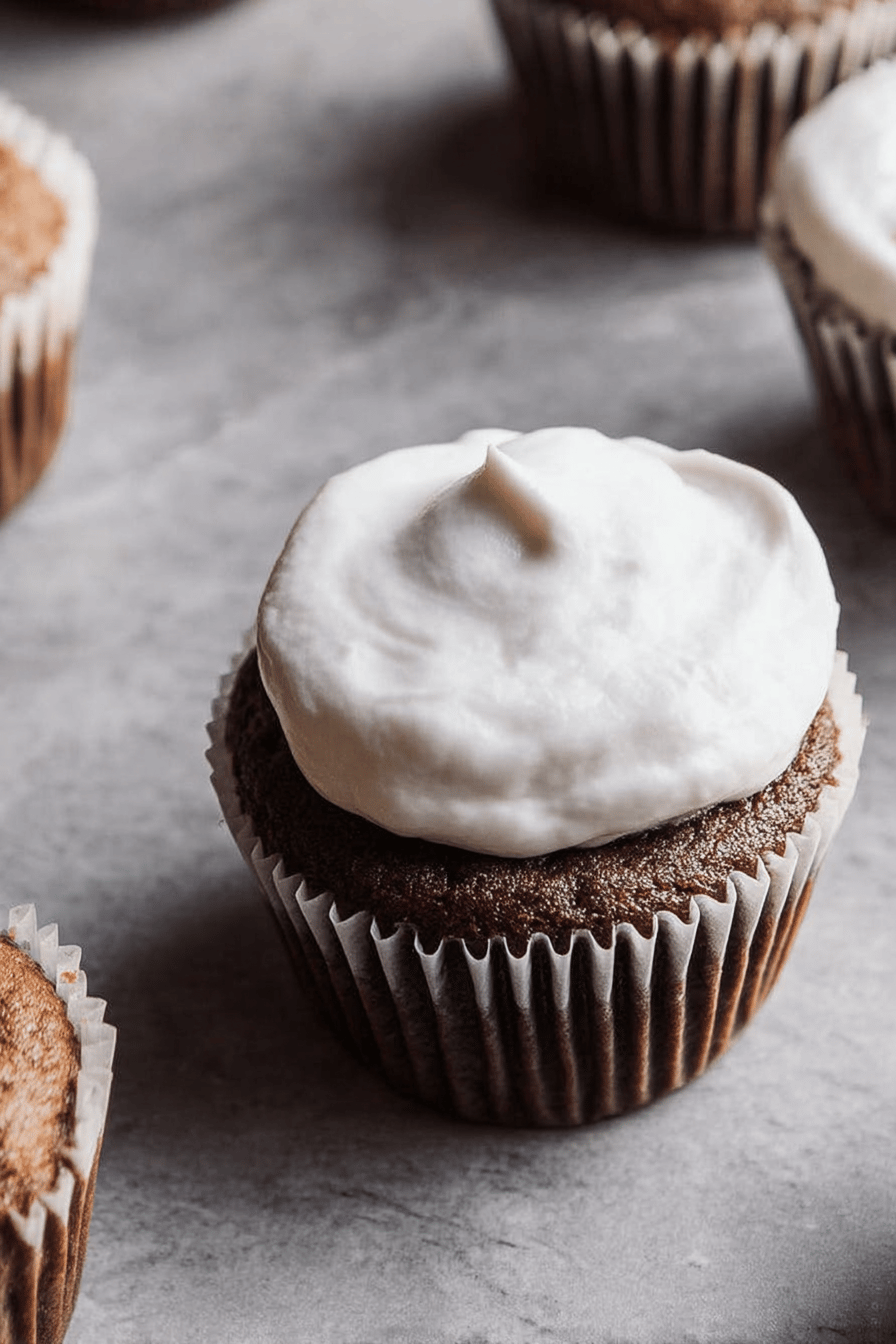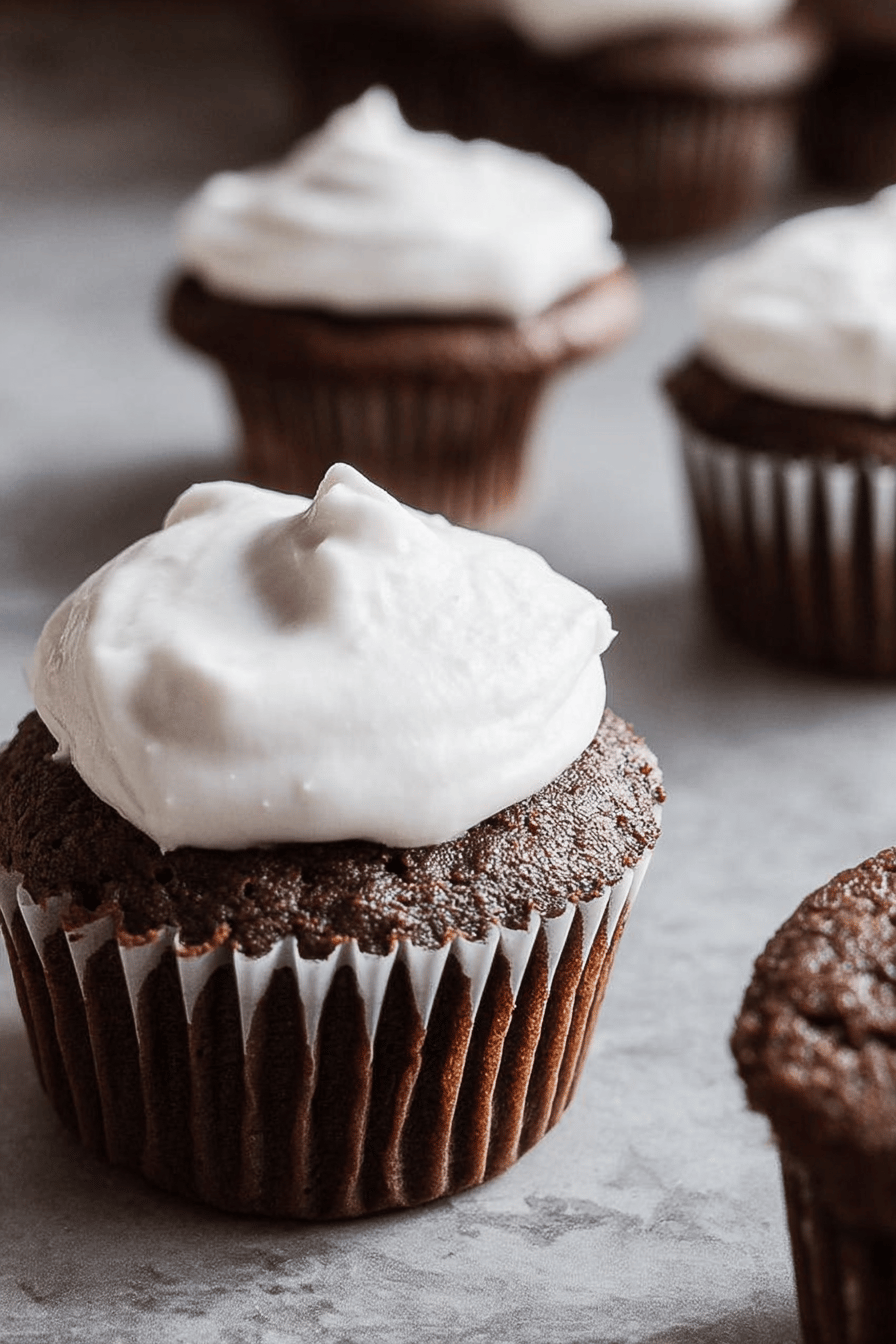Why You’ll Love This Frosting Recipe
As a home baker, I’m always excited to share recipes that make your kitchen time simple and fun. This frosting recipe stands out because it’s quick to whip up and uses ingredients you probably already have on hand. Let’s dive into what makes it a go-to choice for bakers of all levels.
One reason you’ll love this frosting is its ease of preparation. This recipe takes about 10 minutes total, making it perfect for busy days when you want a delicious topping without much fuss. It’s ideal for beginners and seasoned bakers alike, offering smooth results every time.
Another plus is how it supports your wellness goals. With options like milk substitutes, such as almond milk, you can tweak it to fit dietary needs while still enjoying that creamy texture. Plus, it’s versatile enough to work with various desserts, from cakes to cookies.
The flavor is truly special too. The mix of vanilla extract and sweet cream butter creates a rich taste that brings your bakes to life. I remember the first time I tried this on my favorite chocolate cake it made everything feel extra special and easy to share.
This frosting is also adaptable for different diets. You can make it vegan or gluten-free with simple swaps, which helps everyone at the table enjoy the fun. Overall, it’s a recipe that adds joy to your baking routine without any hassle.
Key Benefits in Detail
Here are some standout features that make this frosting a winner:
- Ease of preparation: Just mix a few ingredients and you’re done in minutes, perfect for quick family treats.
- Health benefits: Use wholesome swaps like almond milk to keep it lighter while packing in great taste.
- Versatility: It works for all sorts of occasions, from everyday snacks to big celebrations.
- Distinctive flavor: The vanilla shines through, making your desserts memorable and full of charm.
To expand on its appeal, this recipe yields a pipeable frosting with a slightly crusting texture, which is great for decorating. I often use it on cupcakes for parties, and it always gets compliments. For more ideas, check out this peanut butter frosting variation on my blog, which pairs wonderfully with nutty desserts.
Jump To
- 1. Why You’ll Love This Frosting Recipe
- 2. Essential Ingredients for Frosting Recipe
- 3. How to Prepare the Perfect Frosting Recipe: Step-by-Step Guide
- 4. Dietary Substitutions to Customize Your Frosting Recipe
- 5. Mastering Frosting Recipe: Advanced Tips and Variations
- 6. How to Store Frosting Recipe: Best Practices
- 7. FAQs: Frequently Asked Questions About Frosting Recipe
- 8. Frosting Recipe
Essential Ingredients for Frosting Recipe
Getting the ingredients right is key to perfect frosting. This section breaks down everything you need for a smooth and creamy result. I’ll list them out clearly so you can follow along without any confusion.
Based on my tried-and-true recipe, here are the main items you’ll need. Remember, fresh ingredients make a big difference in the final taste.
Main Ingredients List
- 1 cup slightly softened salted sweet cream butter
- 2 to 3 teaspoons vanilla extract
- 1 pound (approximately 4 cups) powdered sugar
- 1 to 2 tablespoons milk as needed
This list ensures you have exactly what it takes for a great batch. For special tweaks, like making it vegan, try plant-based butter instead of the sweet cream butter.
Special Dietary Options
If you have specific needs, here are some easy adjustments:
- Vegan: Swap in plant-based butter and use almond milk for the milk.
- Gluten-free: Make sure your powdered sugar is certified gluten-free to keep things safe.
- Low-calorie: Cut back on powdered sugar or use a lighter butter option to make it fit your goals.
| Ingredient | Default Measure | Dietary Swap |
|---|---|---|
| Salted sweet cream butter | 1 cup | Plant-based butter for vegan |
| Vanilla extract | 2 to 3 teaspoons | None needed, but adjust for flavor |
| Powdered sugar | 1 pound (4 cups) | Use certified gluten-free version |
| Milk | 1 to 2 tablespoons | Almond milk or half-and-half for variety |
This table helps you see swaps at a glance, making it simple to customize. I love how flexible this recipe is it lets you experiment while keeping things tasty.
How to Prepare the Perfect Frosting Recipe: Step-by-Step Guide
Making this frosting is straightforward and fun, even if you’re new to baking. Follow these steps for the best results, and you’ll have a silky topping in no time. I always feel accomplished when I see how easy it comes together.
First, gather your ingredients and let the butter soften a bit. This helps it mix smoothly without lumps. Start by combining the butter and vanilla extract in a bowl.
Mixing the Base
Use a mixer on medium speed to blend the butter and vanilla for about 2 minutes until they’re fully combined. Don’t forget to scrape down the sides of the bowl to get everything even.
Next, add the powdered sugar slowly on low speed for 30 seconds to mix it in without a mess. Then, crank it up to medium-high speed for 30 to 45 seconds to make it fluffy.
Adjusting Consistency
If the frosting feels too dry, add milk one teaspoon at a time until it’s just right. You can tweak with more vanilla or milk as needed for the perfect texture. This step is where the magic happens, turning it into something spreadable and smooth.
For adaptations, like vegan options, swap in the right ingredients during mixing. Once done, the frosting is ready to use right away or chilled for a firmer feel. Applying it to your cake or cupcakes is the fun part use a spatula for even coverage.
When I first made this, I added a bit extra vanilla, and it made my cookies taste like a dream. Give it your own twist!
This method yields a pipeable frosting that’s great for decorations. Remember, the whole process takes about 10 minutes, so it’s perfect for last-minute needs.
Dietary Substitutions to Customize Your Frosting Recipe
Everyone’s dietary needs are different, and this recipe is easy to adjust. Whether you’re avoiding dairy or watching calories, you can make it work with simple changes. I enjoy experimenting with these to keep things fresh.
For protein and main components, swap traditional butter with coconut oil or vegan butter if you’re on a plant-based diet. This keeps the creaminess without the dairy. Almond or oat milk can replace regular milk for those who are lactose-intolerant.
Flavor and Texture Tweaks
When it comes to vegetables, sauces, and seasonings, add fruit purees like strawberry for a fun twist. Spices such as cinnamon can bring new flavors, and for less sweetness, try natural sweeteners like stevia.
- Replace butter with coconut oil for a tropical vibe.
- Use almond milk to make it dairy-free and light.
- Add fruit purees for natural colors and tastes.
- Incorporate spices to change things up without much effort.
Milk substitutes like half-and-half or whipping cream work well too, adding richness while fitting various diets. If you want to learn more about flavor pairings, check out this strawberry pie recipe on my site, which complements creamy frostings beautifully.
Mastering Frosting Recipe: Advanced Tips and Variations
Once you’re comfortable with the basics, try some pro tips to level up your frosting game. These ideas can make your desserts stand out and add a personal touch. I’ve picked up these tricks over years of baking, and they’re game-changers.
To get a silkier texture, sift the powdered sugar first and ensure the butter is at room temperature. Experiment with flavors like citrus zest or espresso powder for unique tastes. For presentation, use piping bags or add garnishes like fresh berries.
Flavor and Storage Ideas
You can prepare this frosting ahead and store it in the fridge for a day to let flavors blend. If you’re aiming for decorations, practice piping on parchment paper first. Remember, this recipe shouldn’t be doubled due to mixer limits, so make batches separately.
- Sift powdered sugar for a smoother mix.
- Add zest or powder for exciting flavors.
- Use garnishes to make your treats pop.
- Store it covered to keep it fresh longer.
If the frosting is too thick, add milk gradually; if too thin, chill it or add more powdered sugar. For an external tip on baking tools, check out this guide to essential baking tools that can help with frosting prep.
How to Store Frosting Recipe: Best Practices
Proper storage keeps your frosting fresh and ready for use. Whether you’re saving it for later or freezing extras, these tips will help. I’ve learned the hard way that good storage means less waste and more enjoyment.
Store frosting in an airtight container in the fridge for up to a week. For longer keeps, freeze it in small portions and thaw overnight. When you’re ready to use it, bring it to room temperature and mix again for the best texture.
Meal Prep and Safety
Label your containers with dates to stay organized, and consider how it fits into your meal plans. This frosting can be left out covered for 2 to 3 days, or frozen for 3 to 4 months, making it super convenient. If it’s too sweet, a pinch of salt can balance it out.
- Refrigerate in an airtight container for freshness.
- Freeze in portions for easy use later.
- Re-whip after thawing to restore texture.
- Label everything to track storage time.
For more storage ideas, an external resource like this baking storage guide offers great advice.

FAQs: Frequently Asked Questions About Frosting Recipe
Do I need to refrigerate buttercream frosting after applying it to cupcakes?
Buttercream frosting does not require refrigeration after being applied to cupcakes. If stored in a covered container at room temperature, cupcakes with buttercream can stay fresh for 2 to 3 days. However, many bakers choose to refrigerate frosted desserts to prevent the baked goods from drying out. When refrigerated, allow the cupcakes to come to room temperature for a couple of hours before serving to enjoy the frosting’s best texture and flavor.
How can I fix frosting that is too thick or too thin?
If your frosting is too thick, gradually add milk one teaspoon at a time and mix until you reach the desired consistency. If the frosting is too thin, try chilling it in the refrigerator for about an hour to help it firm up. If it remains runny, add powdered sugar in ½ cup increments or 1 tablespoon of cornstarch, mixing well after each addition, until the frosting thickens to your liking.
What should I do if my buttercream frosting tastes too sweet?
To balance overly sweet buttercream frosting, add a small pinch of salt—about 10 to 15 granules of regular table salt—and mix thoroughly. Be cautious, as even a small amount beyond that can alter the flavor significantly. Adding salt helps cut through sweetness and enhances the overall taste. Taste as you go to avoid overpowering the frosting.
Can I substitute regular milk with other liquids in frosting recipes?
Yes, you can substitute regular milk with alternatives such as half-and-half, heavy whipping cream, or plant-based options like almond milk. These substitutes will still provide the liquid needed for a smooth frosting while adding slight variations in richness and flavor. Choose the substitute based on your dietary needs and desired frosting texture.
Is it possible to make a large batch of frosting by doubling the recipe?
While doubling the frosting recipe is possible, it’s not generally recommended for home mixers, which may struggle to mix a larger quantity evenly. Instead, it’s better to prepare two separate batches to ensure the frosting reaches the correct consistency and texture. This approach helps maintain quality and makes decorating easier.

Frosting Recipe
- Total Time: 10 minutes
- Yield: Enough to frost a 2-layer 8-inch cake or about 24 cupcakes
- Diet: Vegetarian
Description
🧁 Achieve smooth and creamy buttercream frosting every time with this simple and reliable recipe.
✨ Perfect for decorating cakes and cupcakes, it combines rich butter with just the right sweetness and texture for piping or spreading.
Ingredients
– 1 cup salted sweet cream butter
– 2 to 3 teaspoons vanilla extract
– 1 pound (4 cups) powdered sugar
– 1 to 2 tablespoons milk
Instructions
1-First, gather your ingredients and let the butter soften a bit. This helps it mix smoothly without lumps. Start by combining the butter and vanilla extract in a bowl.
2-Mixing the Base: Use a mixer on medium speed to blend the butter and vanilla for about 2 minutes until they’re fully combined. Don’t forget to scrape down the sides of the bowl to get everything even.
Next, add the powdered sugar slowly on low speed for 30 seconds to mix it in without a mess. Then, crank it up to medium-high speed for 30 to 45 seconds to make it fluffy.
3-Adjusting Consistency: If the frosting feels too dry, add milk one teaspoon at a time until it’s just right. You can tweak with more vanilla or milk as needed for the perfect texture. This step is where the magic happens, turning it into something spreadable and smooth.
For adaptations, like vegan options, swap in the right ingredients during mixing. Once done, the frosting is ready to use right away or chilled for a firmer feel. Applying it to your cake or cupcakes is the fun part use a spatula for even coverage.
4-This method yields a pipeable frosting that’s great for decorations. Remember, the whole process takes about 10 minutes, so it’s perfect for last-minute needs.
Notes
🧊 Store frosting in an airtight container in the refrigerator for up to one week or freeze for 3 to 4 months.
🍶 Substitute milk with half-and-half, whipping cream, or almond milk for different flavors and textures.
🧂 Add a pinch of salt if the frosting tastes too sweet and refrigerate or add powdered sugar if too thin.
- Prep Time: 10 minutes
- Category: Frosting
- Method: Mixing
- Cuisine: American
Nutrition
- Serving Size: 2 tablespoons
- Calories: 90 calories
- Sugar: 15 grams
- Fat: 5 grams
- Saturated Fat: 3 grams
- Carbohydrates: 12 grams
Keywords: Buttercream Frosting, Smooth Frosting, Creamy Frosting, Frosting Recipe


